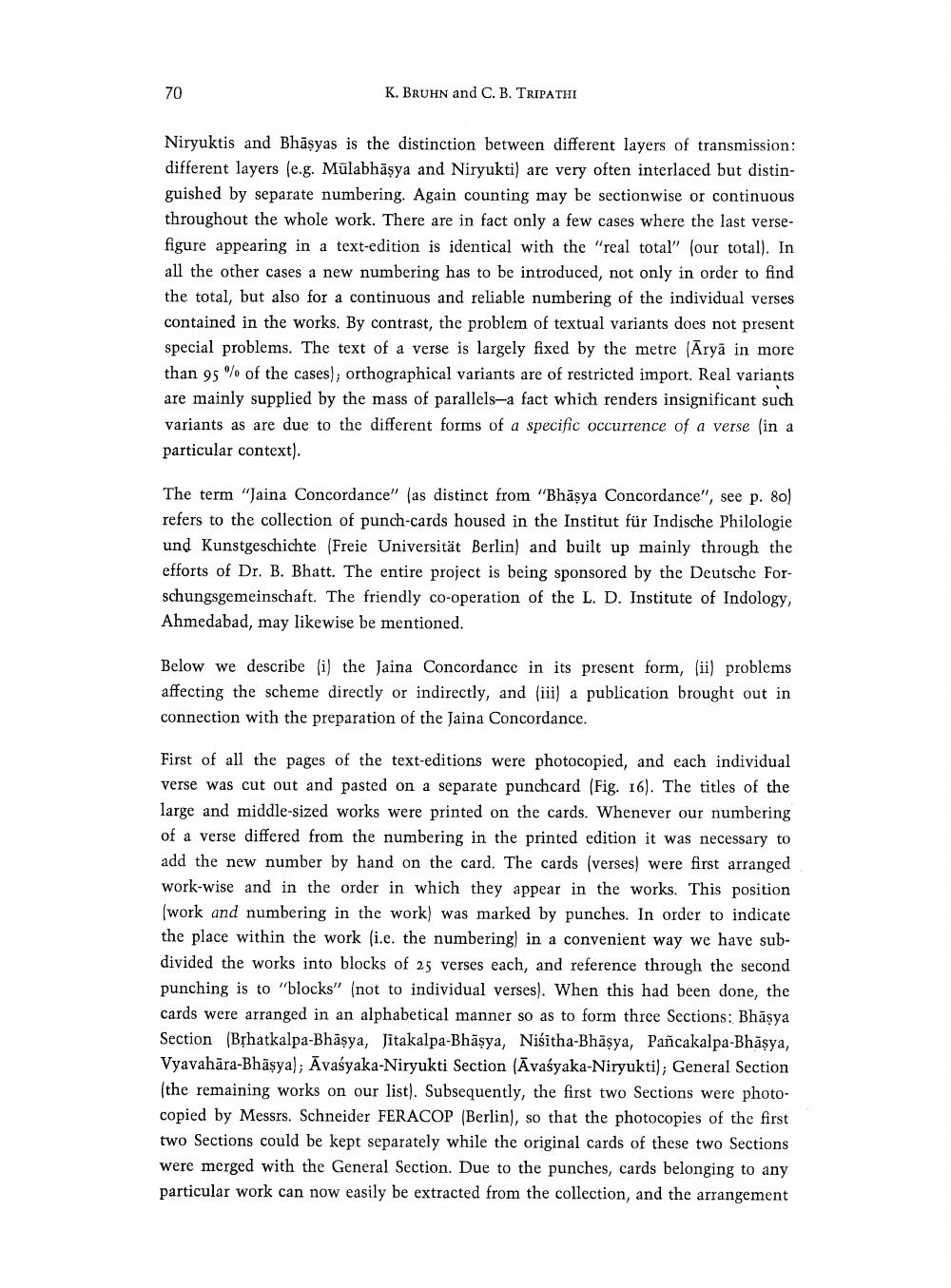Book Title: Jaina Concordance And Bhasya Concordance Author(s): K Bruhn, C B Tripathi Publisher: K Bruhn, C B Tripathi View full book textPage 4
________________ 70 K. BRUHN and C. B. TRIPATHI Niryuktis and Bhāșyas is the distinction between different layers of transmission: different layers (e.g. Mūlabhāşya and Niryukti) are very often interlaced but distinguished by separate numbering. Again counting may be sectionwise or continuous throughout the whole work. There are in fact only a few cases where the last versefigure appearing in a text-edition is identical with the "real total" (our total). In all the other cases a new numbering has to be introduced, not only in order to find the total, but also for a continuous and reliable numbering of the individual verses contained in the works. By contrast, the problem of textual variants does not present special problems. The text of a verse is largely fixed by the metre (Āryā in more than 95% of the cases); orthographical variants are of restricted import. Real variants are mainly supplied by the mass of parallels-a fact which renders insignificant such variants as are due to the different forms of a specific occurrence of a verse (in a particular context). The term "Jaina Concordance" (as distinct from "Bhāşya Concordance", see p. 80) refers to the collection of punch-cards housed in the Institut für Indische Philologie und Kunstgeschichte (Freie Universität Berlin) and built up mainly through the efforts of Dr. B. Bhatt. The entire project is being sponsored by the Deutsche Forschungsgemeinschaft. The friendly co-operation of the L. D. Institute of Indology, Ahmedabad, may likewise be mentioned. Below we describe (i) the Jaina Concordance in its present form, (ii) problems affecting the scheme directly or indirectly, and (iii) a publication brought out in connection with the preparation of the Jaina Concordance. First of all the pages of the text-editions were photocopied, and each individual verse was cut out and pasted on a separate punchcard (Fig. 16). The titles of the large and middle-sized works were printed on the cards. Whenever our numbering of a verse differed from the numbering in the printed edition it was necessary to add the new number by hand on the card. The cards (verses) were first arranged work-wise and in the order in which they appear in the works. This position (work and numbering in the work) was marked by punches. In order to indicate the place within the work (i.e. the numbering) in a convenient way we have subdivided the works into blocks of 25 verses each, and reference through the second punching is to "blocks" (not to individual verses). When this had been done, the cards were arranged in an alphabetical manner so as to form three Sections: Bhāșya Section (Bịhatkalpa-Bhāşya, Jitakalpa-Bhāșya, Niśitha-Bhāșya, Pancakalpa-Bhāṣya, Vyavahāra-Bhāșya); Āvaśyaka-Niryukti Section (Āvaśyaka-Niryukti), General Section (the remaining works on our list). Subsequently, the first two Sections were photocopied by Messrs. Schneider FERACOP (Berlin), so that the photocopies of the first two Sections could be kept separately while the original cards of these two Sections were merged with the General Section. Due to the punches, cards belonging to any particular work can now easily be extracted from the collection, and the arrangementPage Navigation
1 2 3 4 5 6 7 8 9 10 11 12 13
